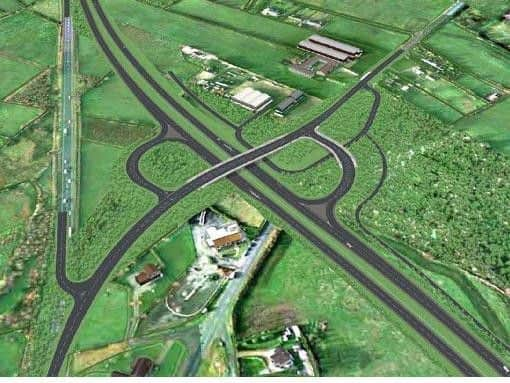Campaigner loses appeal over route of A6 road near Toome


Chris Murphy was seeking to overturn a previous ruling that the plans to build a section of the A6 Belfast to Derry upgrade close to wetland where migratory birds forage are lawful.
But judges in the Court of Appeal rejected his claims that the environmental assessment was out of date and required further analysis due to the passage of time.
Advertisement
Hide AdAdvertisement
Hide AdLord Chief Justice Sir Declan Morgan held that a Stormont Minister's decision to proceed with the scheme last year complied with the Habitats Directive.


He said: "The 2016 statement addressed the impacts on each of the significant features."
Mr Murphy, who brought the case as a personal litigant, signaled he may now seek to take his fight to the Supreme Court in London.
The legal battle centred on the disputed Toome to Castledawson stretch of road close to Mossbawn - the childhood home of the former Nobel laureate poet.
Advertisement
Hide AdAdvertisement
Hide AdThe route was identified following a public inquiry nearly a decade ago.


Former Infrastructure Minister Chris Hazzard gave the green light to the scheme last year in a bid to significantly improve a major transport corridor and ease rush-hour gridlock.
Proceedings examined ecological checks made to potential disturbance to the wintering swans on nearby Lough Neagh and Lough Beg.
Earlier this year a High Court judge held that the Department's decision was lawful and rational.
Advertisement
Hide AdAdvertisement
Hide AdRepresenting himself once again in an appeal against that verdict, Mr Murphy claimed the project was based on environmental information from nearly a decade ago.
He insisted the authorities were legally required to carry out a new appropriate assessment of the ecological impact under Article 6 of the Habitats Directive.
Instead, he claimed, the analysis carried out in 2016 was "not fit for purpose".
According to Mr Murphy the area represents the most important wintering site for whooper swans in Ireland - but their numbers are now in decline.
Advertisement
Hide AdAdvertisement
Hide AdBuilding a dual carriageway there will destroy the seclusion and tranquility which brings the birds back, he contended.
Lawyers for the Department for Infrastructure insisted surveys of whooper swan patterns in the area have been maintained annually.
They also stressed how the Royal Society for the Protection of Birds (RSPB) was consulted and concluded that the scheme will not have an adverse impact.
Ruling on the appeal, Sir Declan rejected contentions that a further appropriate assessment was required due to the passage of time.
Advertisement
Hide AdAdvertisement
Hide AdReferring to the 2016 statement, he said: "It did not purport to be a new appropriate assessment, but it was intended to review the 2008 assessment in light of up-to-date information and practices in order to address the possibility of deterioration or disturbances which could be significant in relation to the objectives of the directive."
The judge also concluded that there is no direct impact on the protected whooper swans.
"The foraging lands are not themselves a protected feature," he added.
"For reasons which essentially mirror those of the learned trial judge we dismissed the appeal."
Following the verdict Mr Murphy sought guidance from the judges on how he could mount a further appeal to the Supreme Court.